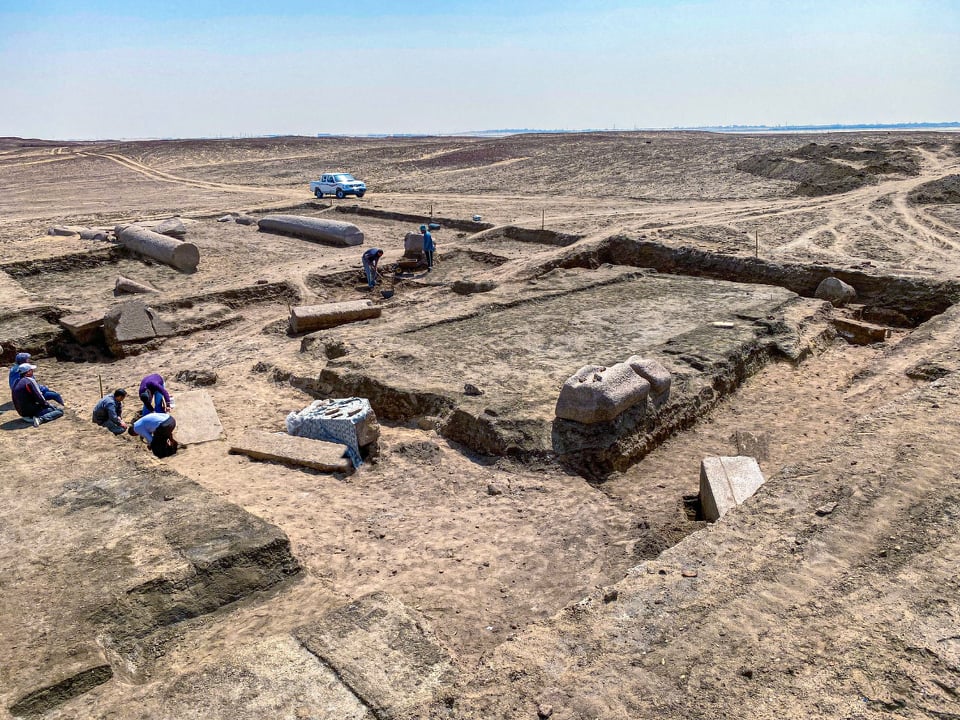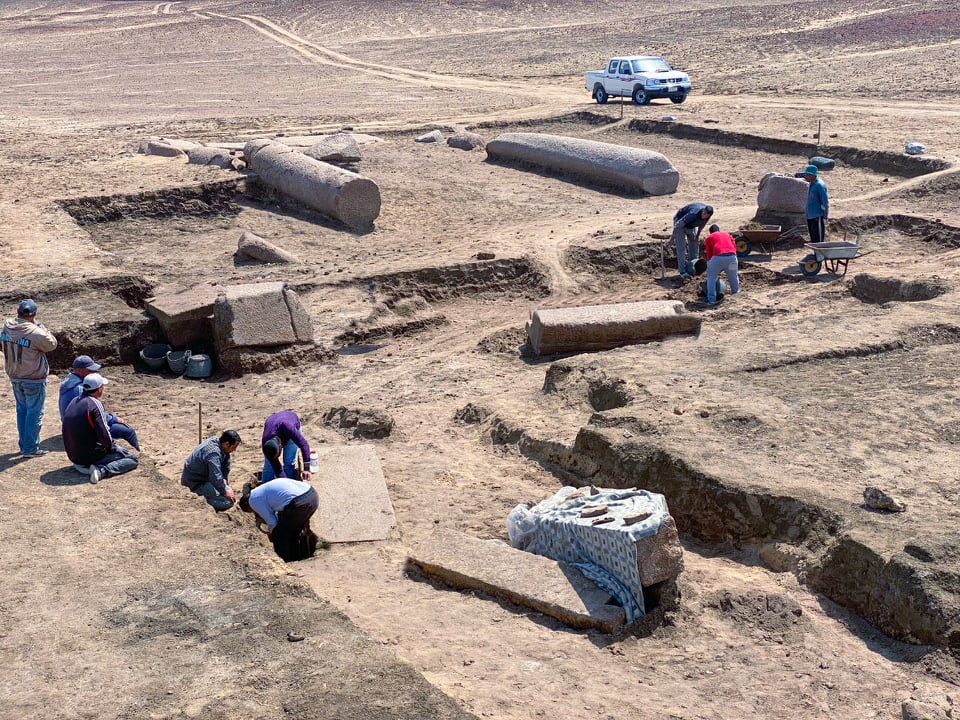CAIRO – 26 April 2022: Secretary General of the Supreme Council of Antiquities Mostafa Waziri said that the Egyptian archaeological mission working at Pelusium [Tel Al-Farma] in the North Sinai Archaeological Area succeeded in uncovering the remains of the Temple of Zeus Cassius.
This came during the excavations the mission is conducting at the site within the Sinai Development Project for the year 2021-2022. The discovered temple is located about 200 meters to the west of Pelusium Citadel and 100 meters to the south of the Memorial Church on the site, according to Waziri.
Furthermore, Waziri stated that the location of the discovered temple was determined based on the presence of the remains of a huge gate on the surface of the earth that collapsed in the past due to a strong earthquake that struck the city. The gate consisted of two pink granite columns, each about 8 meters long and one meter thick. That is in addition to the presence of an upper lintel of granite that was installed above the gate.

For his part, Head of the Egyptian Antiquities Sector at the Supreme Council of Antiquities Ayman Ashmawy said that the archaeological mission uncovered for the first time the remains of the temple, which was built of mud bricks on a raised platform of rubble and broken stones. Its ceiling bears columns of pink granite, and the entrance to the temple is located towards the east. An ascending staircase covered with marble led to the temple.
Ashmawy noted that in 1910, the French archaeologist Jean Clédat had discovered late Greek inscriptions on the lintel indicating the presence of the Temple of Zeus Cassius in this location, but he could not find it.

Head of the Central Department of Antiquities of Lower Egypt Nadia Kheder said that many huge stone blocks of pink granite were discovered lying in the streets surrounding the temple’s site. According to Khedr, the site was likely later exploited as a quarry and some of its parts were moved to be reused in the construction of churches at Tel Al-Farma, including the Corinthian capitals of the Temple of Zeus Cassius, which were used in the Memorial Church located north of the temple.
Moreover, Director General of Sinai Antiquities Hisham Hussein confirmed that those discovered blocks are now being studied, documented and photographed using photometric technology to be reassembled using modern programs and techniques, which contributes to reaching the architectural design closest to the Temple of Zeus Cassius.

Hussein added that the archaeological survey and the limited excavations that were carried out at the site in 1910 by the French archaeologist Jean Clédat within the project of the archaeological survey and excavations of the Suez Canal International Company were unsuccessful in revealing the remains of the temple, but revealed a pink granite stone block with an incomplete inscription in ancient Greek that was rediscovered again during the current 2022 season, in addition to another stone block of pink granite with a deep Greek inscription, discovered for the first time.
By studying the two blocks, it was found that the texts complement each other, as the inscriptions indicate that Emperor Hadrian ordered new additions to the Temple of Zeus Cassius in Pelusium, and that the Procurator of Alexandria at the time, Titus Flavius Titanus, was the one who made these additions.
Comments
Leave a Comment